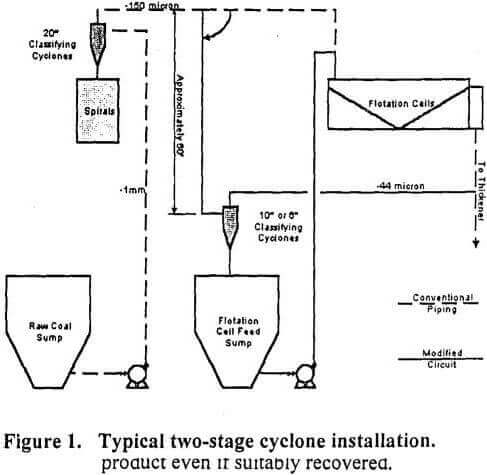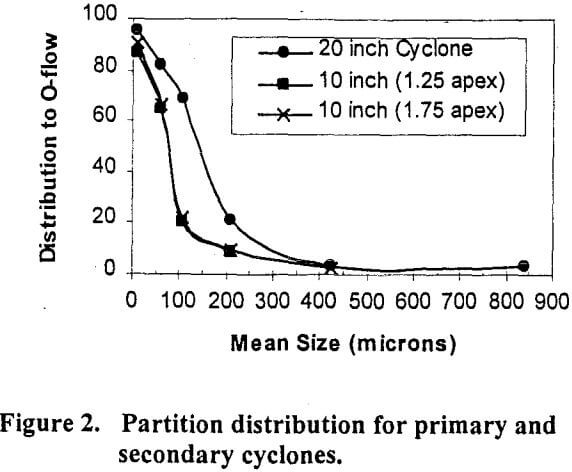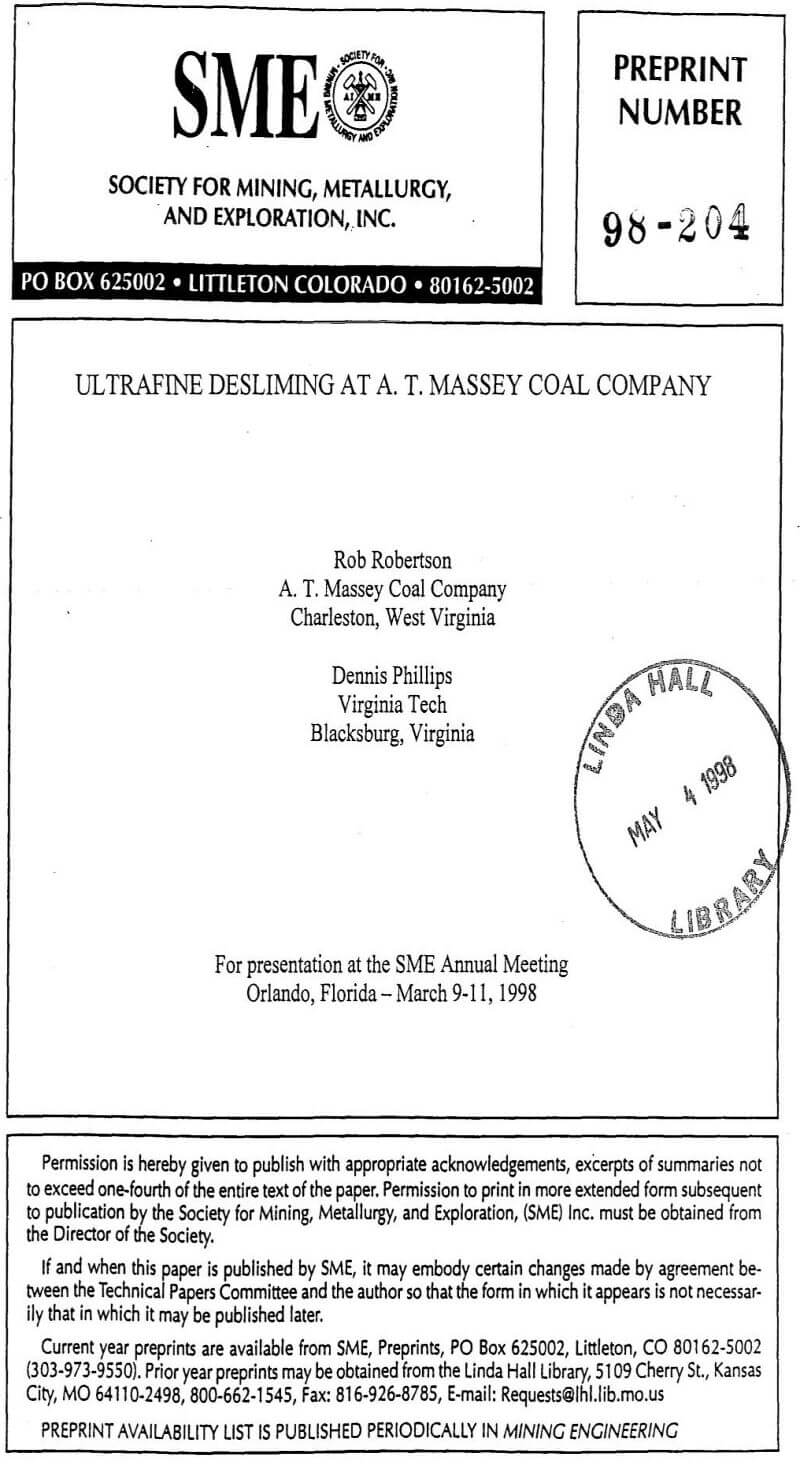 Analysis of the feed to several plants revealed that the material finer than 44 µm (325 mesh) and even 70 µm (200 mesh) was usually very high in ash content (>30 %) with a considerable amount of superfine size clays. Due to the high ash content and the poor dewatering ability of the minus 44 µm coal when recovered, it became viable to consider completely discarding this size fraction. It is difficult, however, to make an accurate size cut at 150 µm on raw coal and a 44 µm cut is doubly so. The difficulty is in part due to the variations in particle densities of coal (1.3 to 1.6 S.G.) and rock or clays (-2.65 S.G.). Fine wire screens for this superfine size separation are not in the least economical. Standard single-stage classifying cyclone circuits were tried in the past with less than satisfactory results. With a larger cyclone, too much oversize low density coal reported to the overflow, while with the smaller cyclones, -250 mm (10-inch), excessive amounts of high density clays reported to the underflow of the cyclone.
Analysis of the feed to several plants revealed that the material finer than 44 µm (325 mesh) and even 70 µm (200 mesh) was usually very high in ash content (>30 %) with a considerable amount of superfine size clays. Due to the high ash content and the poor dewatering ability of the minus 44 µm coal when recovered, it became viable to consider completely discarding this size fraction. It is difficult, however, to make an accurate size cut at 150 µm on raw coal and a 44 µm cut is doubly so. The difficulty is in part due to the variations in particle densities of coal (1.3 to 1.6 S.G.) and rock or clays (-2.65 S.G.). Fine wire screens for this superfine size separation are not in the least economical. Standard single-stage classifying cyclone circuits were tried in the past with less than satisfactory results. With a larger cyclone, too much oversize low density coal reported to the overflow, while with the smaller cyclones, -250 mm (10-inch), excessive amounts of high density clays reported to the underflow of the cyclone.
The solution employed by this coal company involves the use of a two-stage classifying cyclone circuit which utilizes a different sized cyclone for each stage. The secondary stage may be pump fed or, when layout allows, it may be gravity fed as in Figure 1. By using a large 500-mm (20-inch) diameter cyclone as the primary stage and a 250-mm (10-inch) or 150-mm (6-inch) cyclone as the secondary cyclone, many of the inherent errors of cyclones are taken to advantage. Some coarser low ash coal particles report to the overflow of the larger cyclone which is attempting to make a nominal 150 µm cut. The smaller cyclones of the second stage then have little difficulty sending this coarser material to the underflow.

With most of the coarse material removed in the primary stage, the percent solids is thus lower in the secondary stage. With lower solids and less material moving to the underflow, there is less entrained water and therefore less entrained fines (fines bypass) in the underflow. While cyclones smaller than 150-mm (6-inch) will make a finer size cut, a prohibitive number of units would be required and would also be subject to frequent plugging problems on material of this nature.
Although a 44 µm cut remained difficult, a reasonable cut was made at 70 µm (200 mesh) and provided similar benefits. Figure 2 shows the relatively sharp separation of the larger cyclone and the very sharp separation of the smaller cyclone. The sharp separation of the smaller cyclone indicates the advantage of removing much of the coarsest material in the primary stage.
As with any classifying cyclone there are fines “bypassing” to the underflow of both cyclones. This bypass results in a primary cyclone underflow that contains 5.78% minus 44 µm and a secondary underflow containing 27.3% minus 44 µm (Table 1).
